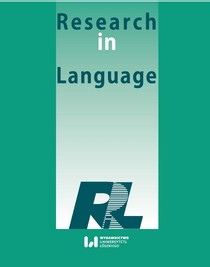COMPLEX PATTERNS IN L1-TO-L2 PHONETIC TRANSFER: THE ACQUISITION OF ENGLISH PLOSIVE AND AFFRICATE FAKE GEMINATES AND NONHOMORGANIC CLUSTERS BY POLISH LEARNERS
COMPLEX PATTERNS IN L1-TO-L2 PHONETIC TRANSFER: THE ACQUISITION OF ENGLISH PLOSIVE AND AFFRICATE FAKE GEMINATES AND NONHOMORGANIC CLUSTERS BY POLISH LEARNERS
Author(s): Andrzej Porzuczek, Arkadiusz RojczykSubject(s): Foreign languages learning, Phonetics / Phonology, Language acquisition, Phraseology
Published by: Wydawnictwo Uniwersytetu Łódzkiego
Keywords: L2 speech; phonetic transfer; unreleased stops; geminates;
Summary/Abstract: This paper analyses the way that Polish learners of English articulate plosive and affricate consonants preceding another obstruent occlusive in both L1 and L2. Considering that English allows unreleased plosives before any stop, that is in a wider range of contexts than Polish, a Polish learner may find it confusing that it is regarded unacceptable to block the affricate release before another (in English always homorganic) affricate. In Polish the first of two homorganic affricates is often reduced to the occlusion phase, while unreleased plosives appear very rarely in non-homorganic contexts. This apparent paradox in the treatment of affricate and plosive consonant clusters may lead to complicated transfer patterns, which we examine by observing the release suppression tendencies in Polish and English phrases and sentences read by phonetically trained and untrained Polish learners of English. The results indicate strong negative transfer tendencies and suggest a connection between gemination patterns and unreleased occlusive distribution in a language.
Journal: Research in Language (RiL)
- Issue Year: 19/2021
- Issue No: 1
- Page Range: 1-13
- Page Count: 13
- Language: English

